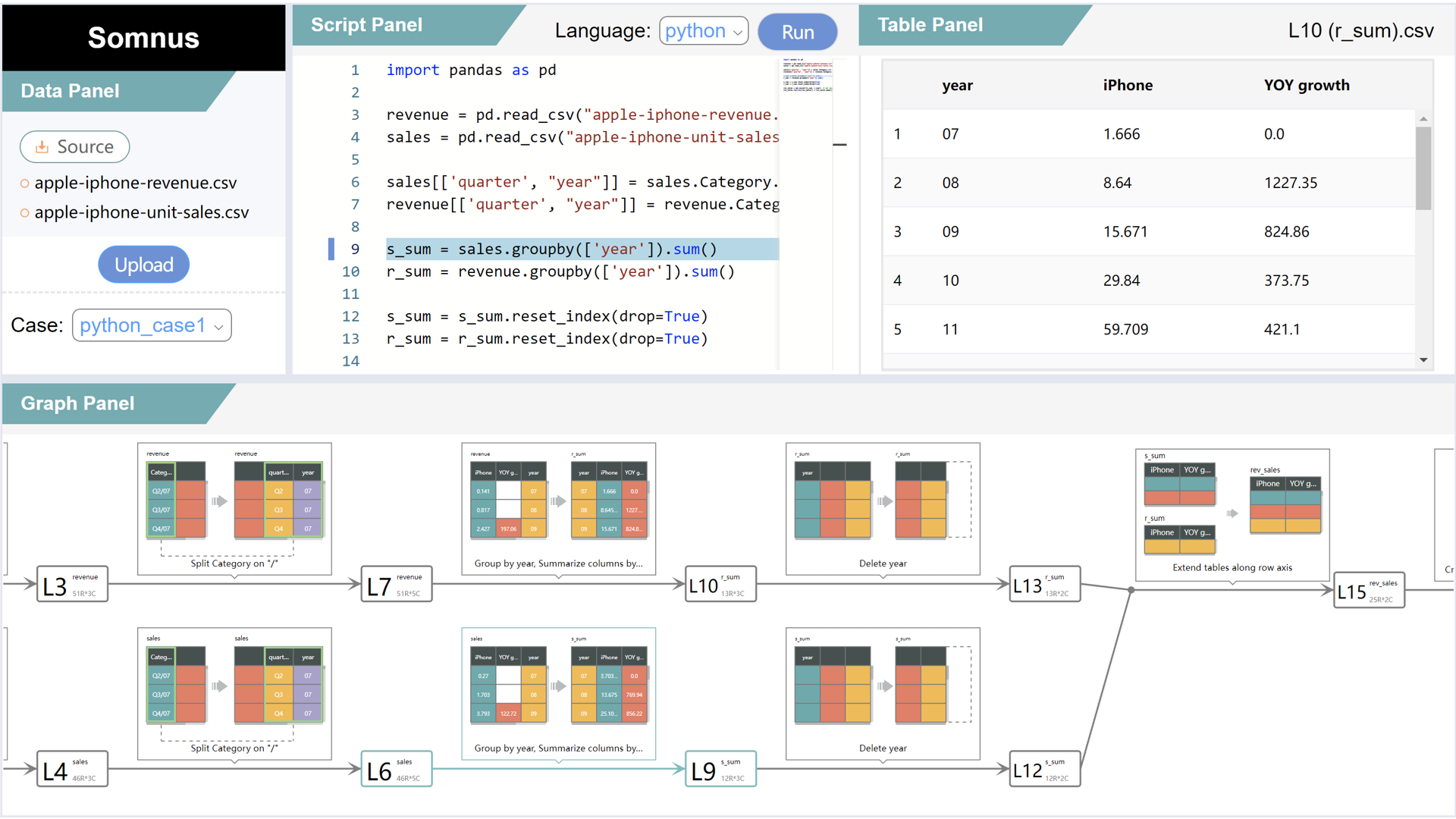Visualizing the Scripts of Data Wrangling with SOMNUS
Kai Xiong, Siwei Fu, Guoming Ding, Zhongsu Luo, Rong Yu, Wei Chen, Hujun Bao, Yingcai Wu
View presentation:2022-10-19T14:12:00ZGMT-0600Change your timezone on the schedule page
2022-10-19T14:12:00Z

Prerecorded Talk
The live footage of the talk, including the Q&A, can be viewed on the session page, Transforming Tabular Data and Grammars.
Fast forward
Keywords
Program understanding, data transformation, visualization design
Abstract
Data workers use various scripting languages for data transformation, such as SAS, R, and Python. However, understanding intricate code pieces requires advanced programming skills, which hinders data workers from grasping the idea of data transformation at ease. Program visualization is beneficial for debugging and education and has the potential to illustrate transformations intuitively and interactively. In this paper, we explore visualization design for demonstrating the semantics of code pieces in the context of data transformation. First, to depict individual data transformations, we structure a design space by two primary dimensions, i.e., key parameters to encode and possible visual channels to be mapped. Then, we derive a collection of 23 glyphs that visualize the semantics of transformations. Next, we design a pipeline, named Somnus, that provides an overview of the creation and evolution of data tables using a provenance graph. At the same time, it allows detailed investigation of individual transformations. User feedback on Somnus is positive. Our study participants achieved better accuracy with less time using Somnus, and preferred it over carefully-crafted textual description. Further, we provide two example applications to demonstrate the utility and versatility of Somnus.